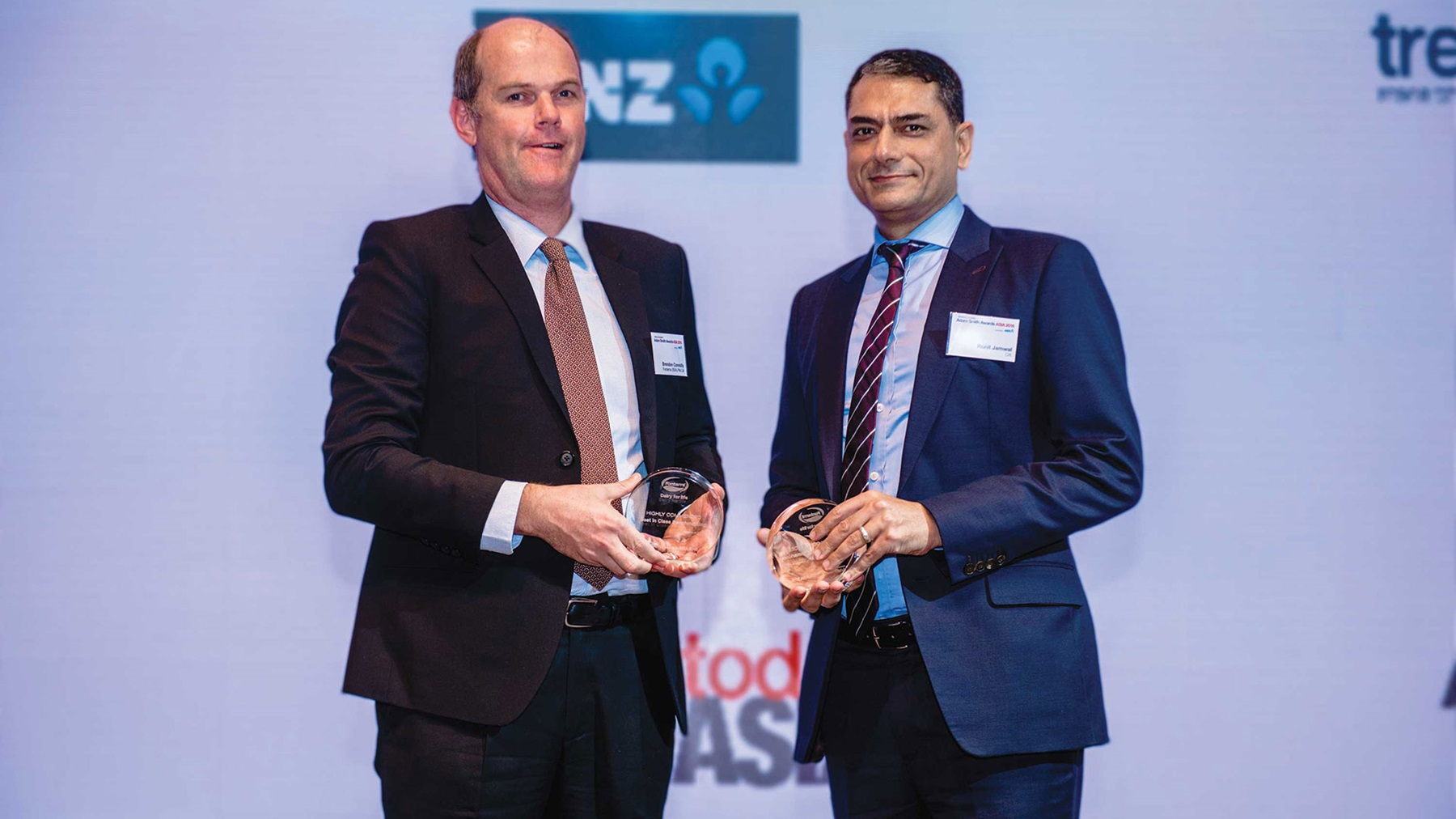
Photo of Brendon Connelly, Fonterra Co-operative Group and Rohit Jamwal, Citi.
This company has identified six key areas from treasury policy and governance, liquidity management, working capital and risk to subsidiary funding and repatriation, to systems and technology to come under the benchmarking lens. They undertook a comprehensive diagnostics exercise with their banking partner.
Mike Jones
Manager, Treasury Strategy & Risk

With an annual turnover of US$14bn, Fonterra Co-operative Group Limited is the world’s largest global milk processor and dairy exporter, delivering high quality dairy ingredients and a portfolio of respected brands to consumers globally.
in partnership with

The challenge
The global dairy industry faced a challenging period in 2015, which saw price compression owing to supply and demand imbalances, driven in part by China’s economic slowdown as well as very strong global supply. While market uncertainties suggest that the industry may continue to be tested in the medium term, Fonterra’s approach has been to focus its resources to make itself nimbler, more resilient and more efficient.
To achieve these goals, Fonterra undertakes periodic and regular business reviews across the organisation to identify areas to enhance productivity and improve future performance. With a strong focus on optimisation of cash flows and balance sheet, its treasury team sought tools to help evaluate their relative strengths and weaknesses against other companies, and to drive decision-making in areas to focus its treasury initiatives and improvement efforts.
Mike Jones, Manager, Treasury Strategy & Risk explains, “To enhance this exercise, we reached out to Citi to take advantage of their Treasury Diagnostics benchmarking tool. This provided us with a systematic assessment of the effectiveness of our treasury and working capital practices and processes, and a point of comparison against our industry peers.”
The solution
On the basis of the benchmarking results and analyses, Fonterra’s treasury team was able to identify areas for improvement, prioritise initiatives to improve FX exposure forecasts and suitably assess emerging markets risks, alongside treasury systems integration.
The benchmarking results also provided support for the team’s internal drive to improve and integrate their Treasury Workstation and ERP systems, and reinforced internal objectives to further incorporate subsidiary cash flow forecasts into Fonterra’s regular group-level exposure forecasting process. By repeating the benchmarking exercise consecutively in 2015 and 2016, the treasury has been able to effectively evaluate progress against targeted initiatives.
Best practice and innovation
Fonterra leveraged Citi’s Treasury Diagnostics benchmarking tool to evaluate and analyse its treasury function on a comprehensive and consistent basis across six key functional areas of treasury operations, namely:
- Treasury policy and governance.
- Liquidity management.
- Working capital.
- Risk management.
- Subsidiary funding and repatriation.
- Systems and technology.
The approach to, and parameters for benchmarking are best in class – enabling Fonterra to objectively evaluate how their treasury practices and processes compare against their peer group, rather than relying on ad-hoc enquiries and/or subjective responses. As a result, Fonterra was able to leverage insights obtained in terms of market-leading treasury practices to support its focus on continuous improvement.
Jones concludes: “Recent market uncertainty sharpened our focus on our objectives of cash optimisation, treasury best practise, and continuous improvement. To help us achieve these goals, we undertook a comprehensive Treasury Diagnostics benchmarking exercise to evaluate the effectiveness of our treasury practices and processes against industry peers and best-in-class companies. Based on the benchmarking output, we have identified areas for improvement and prioritised initiatives in areas pertaining to FX exposure forecasts, hedging of emerging market risks and treasury systems integration. We also obtained external validation on a number of existing strategic work streams, in particular around the need to fully integrate cash flows/exposure forecasting across the group, and a focus on continuous systems and technological improvement.”
Key benefits
- Identified areas for improvement.
- Evaluate progress against target goals.
- Supports continuous improvement.